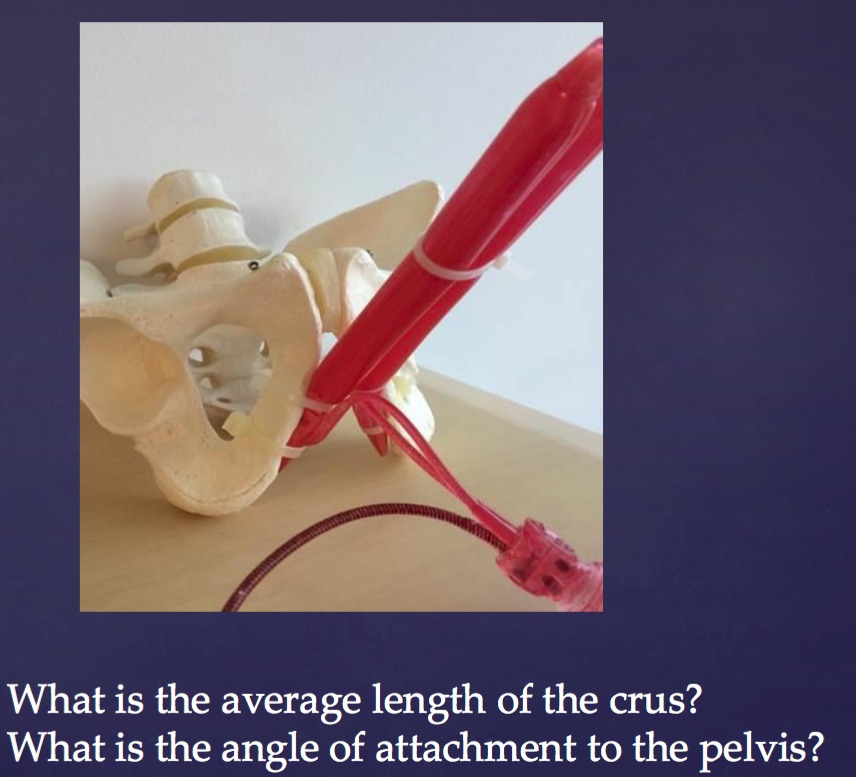Good questin. As mentioned on the prior responses, the penis is attached to your pelvis bone through the cartilage and fibers of the crus. In a very rough manner, this is simulated by the picture below:

- pelvis.jpg (107.95 KiB) Viewed 1763 times
The photo comes from a scientific presentation on rigidity and rear tip extenders. The presentation was in scottsdale, and the publication is listed below:
Rear Tip Extenders and Penile Prosthesis Rigidity: A Laboratory Study of Coloplast Prostheses
Billy H. Cordon, MD
,
Martin S. Gross, MD
,
Jeffrey Taylor, BS
,
Jean-Francois Eid, MD
Abstract
Background
Rear tip extenders (RTEs) are used commonly in penile prostheses, but their effect on erectile rigidity has not been extensively studied.
Aim
To determine whether RTEs affect erectile rigidity in inflatable penile prostheses and determine what length of RTE should be used for a given corporal length—in this case, 22 cm.
Methods
To assess the effect of RTEs on erectile rigidity, we created a penile model simulating 2 corpora cavernosa that accommodated cylinders of varying lengths. Once the cylinders were inflated, a 200-g weight was then uniformly placed on the tip of the cylinders and deflection was measured using a ruler. Measurements were repeated for varying cylinder/RTE lengths to total 22 cm of overall corporal length.
Outcomes
Differences in rigidity and angular deflection based on RTE length were assessed.
Results
Increasing the length of RTEs increased the deflection in our model, indicative of decreased axial rigidity.
Clinical translations
The current work implies that having additional RTEs may decrease penile rigidity and in turn, patient satisfaction.
Strengths and limitations
Though assessing effect of RTEs on erectile rigidity is novel, the exact ability of our model to predict in-vivo behavior is unknown.
Conclusion
An inflatable penile prosthesis represents a heterogeneous beam given that it is composed of a non-inflatable rear combined to an inflatable cylinder. In this model greater bending deflection was associated with more RTE length. Greater RTE length decreases the size of the inflatable device that can be implanted. The erect penis is subject to axial stress and bending deflection. Though further work is needed, these data support the notion that maximizing inflatable length by minimizing RTEs will improve overall erectile rigidity dynamics.
Thirumavalavan N, Cordon BH, Gross MS, et al. Rear Tip Extenders and Penile Prosthesis Rigidity: A Laboratory Study of Coloplast Prostheses. J Sex Med 2018;15:1030–1033.